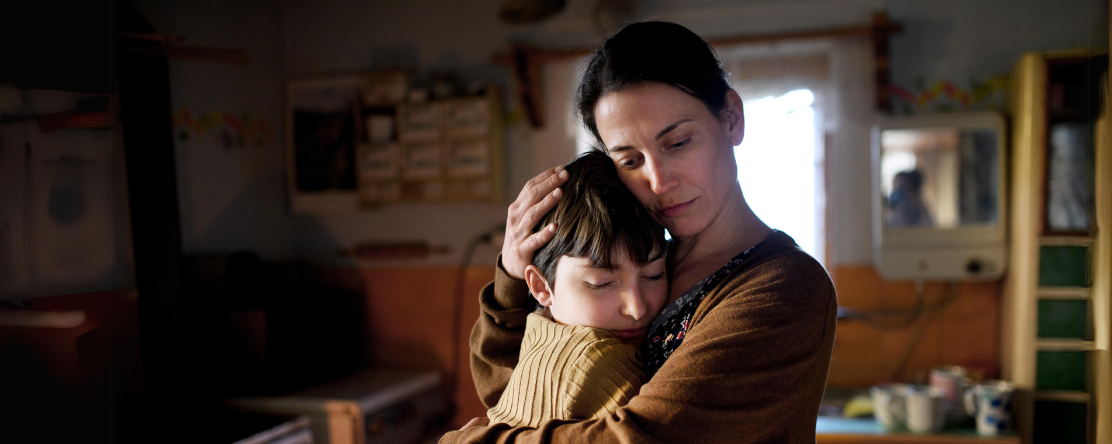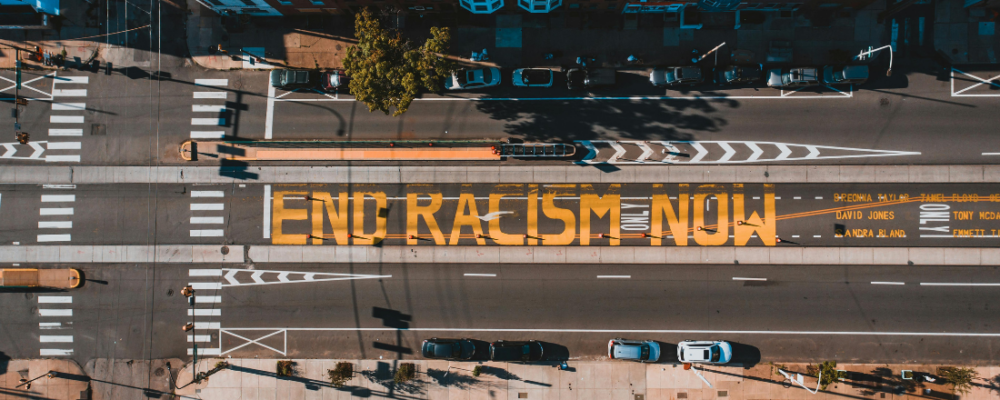
Five Narrative Change Strategies for Highlighting the Connection Between Housing Insecurity and Domestic Violence
- Lunden Mason
-
Focus Areas
Capacity Building & Leadership -
Issues
Violence Prevention -
Expertise
Media Advocacy & Communications -
Programs
Berkeley Media Studies Group

Lunden Mason with PHI’s Berkeley Studies Media Group spoke to Sammie Rayner and Felicia Torrez of the San Francisco housing and safety nonprofit Community Forward about the connection between homelessness and domestic violence—and how that reality is often missing from news coverage. Research conducted by Berkeley Media Studies Group, in partnership with the Housing Opportunities Mean Everything (HOME) Cohort, confirms Community Forward’s observation that the news media usually report on housing and domestic violence separately.
Community Forward is striving to shift the narrative surrounding these issues—not only to help the public see them as intertwined, but also to demonstrate why addressing homelessness and domestic violence matters for everyone. This piece shares five lessons from their work, which can be applied to advocacy efforts in housing, violence, and beyond.
For Sammie Rayner, longtime advocate for people experiencing homelessness, lasting narrative change is only possible when we elevate women’s voices. Many social issues, including our lack of stable and affordable housing, have unique and disparate impacts on people who identify as women, yet that reality is often missing from news coverage. How news covers social problems shapes what solutions the public and policymakers see as viable, so the omission of women’s perspectives makes necessary, lasting change more elusive.
80% of unhoused women with children report having experienced domestic violence prior to losing their housing, said Rayner, who serves as Chief Impact Officer for a San Francisco-based housing and safety nonprofit called Community Forward.
Why, then, don’t we see that connection making headlines?
Research conducted by Berkeley Media Studies Group, in partnership with the Housing Opportunities Mean Everything (HOME) Cohort, confirms Community Forward’s observation that the news media usually report on housing and domestic violence as separate issues. Our study, forthcoming May 30, found extremely limited news coverage that made explicit connections between the two issues.
Community Forward is striving to shift the narrative surrounding these issues, not only to help the public see them as intertwined, but also to demonstrate why addressing homelessness and domestic violence matters for everyone. Community Forward seeks to expand the public’s understanding of homelessness — specifically as a women’s issue and, broadly, as a systemic failure and a crisis of inequity.
The connection between homelessness and domestic violence is also apparent in who is most harmed: Black, Latine and Indigenous communities are disproportionately affected by homelessness, and Black, Latine, Indigenous and Asian communities experience high rates of domestic violence.
Although Community Forward does not define itself as a domestic violence organization, the interconnection of housing and domestic violence means that Community Forward’s work — both on the organizing front and the messaging front — must address both issues simultaneously.
They do so by centering women.
“We believe that we’re going to revitalize and we’re going to bring our city back,” Rayner said. “And if we’re going to do that, we need to do it together, and women should be at the heart of it. Women create community. Women prioritize safety. Women are innovators and are resilient. And if we invest in women, we think that’s going to make [the biggest difference].”
That is the mindset that Community Forward staff bring to their work, whether they are connecting a resident with transitional housing, providing trauma-informed support and case management, or describing their safety-net services to a reporter.
While there is still a dearth of coverage connecting domestic violence and the lives of people who are unhoused, some successes of narrative change work — at Community Forward and beyond — are clear in the San Francisco Chronicle‘s coverage of these intersecting issues.
“Unhoused women must confront challenges from how to afford tampons to how to protect their bodies. Many survive abuse that pushes them into homelessness, while others are assaulted living on the streets or inside city homelessness facilities,” an article from August 2023 reads.
More recently, The Chronicle covered a UCSF Benioff Homelessness and Housing Initiative study that found that experiencing domestic violence increases the risk of homelessness for survivors, specifically for women who have very little financial means.
To learn more about Community Forward’s approach to narrative change work, BMSG spoke with Rayner and Felicia Torrez, the organization’s Director of Development. Below are five lessons from Community Forward, which can be applied to advocacy efforts in housing, violence, and beyond.
Recommendations for advocates on changing the narrative
1. Position individual stories as examples of systemic failure — and opportunities for systemic solutions
Community Forward stressed the importance of showing how systems shape individual stories. Staff members work collaboratively across teams to ensure their storytelling efforts highlight a person’s lived experience and situate it within the broader context of the housing crisis.
“Having a really close dialogue between who’s doing your media and your storytelling and your programs team [is important]. Felicia and I try to spend a lot of time with them so that our messaging is reflecting what we’re seeing on the ground,” Rayner said.
Further, Community Forward employs a solutions-based approach to systemic failures that requires city-wide collaboration and community building.
“We want to be part of the solution, not just for unhoused people, but [for] our community’s healing and safety,” Rayner said.
2. Elevate authentic voices
Messengers matter in narrative change — it’s not just the words we say, but who gets to say them. In the case of Community Forward, uplifting the voices of women and sharing their stories — when they feel safe sharing, and there are organizational supports to help generate this safety — helps to combat stereotypes and broaden the narrative surrounding homelessness.
“We’re really mindful of the privacy of folks that are in our programs. When it comes time to tell stories, we don’t want to re-traumatize anyone,” said Torrez. “Obviously, we ask folks to participate and if they’re willing to share their story, that’s wonderful. But just really being mindful [that] folks might not be ready to share.”
Community Forward features Guest Stories on their website, and their staff develop relationships with reporters so that media can uplift the authentic voices of the women in their programs.
3. Bring curiosity to the forefront
When advocates, journalists, and the general public approach the issue of homelessness with broad curiosity, instead of having a fixed narrative in mind, it allows for deeper nuance and greater intersectionality among issue areas. Uplifting such nuance fights against monolithic news, creating richer, more accurate storytelling that, in turn, makes policy better.
For example, Rayner and Torrez explained they’d like to see more coverage of single adult unhoused women and the aging unhoused population. “At our drop-in center at any given time, more than 50% are women over 50. And when you’re unhoused, your life expectancy is 48 as opposed to 83 for the general population,” said Rayner. “That’s not what people gravitate toward. And I mean, these are our grandmothers. We should be wrapping our arms around these women who’ve built families, built community, and have ended in this place in their life.”
Advocates can help bring these stories to journalists and connect them to diverse sources to help foster a curiosity-driven approach in media coverage. This allows reporters to more accurately reflect the lived experiences of unhoused people, especially those who have been the most harmed.
4. Deepen relationships with journalists
While cultivating relationships between advocates and journalists requires an investment of time and organizational resources, it can result in more complete storytelling about an issue.
“What has worked really well for us is when journalists have built a relationship and actually monitored a problem over time. Some of the best pieces — the pieces by Mallory Moench that are in the [San Francisco] Chronicle — were six months of investigative journalism,” said Torrez. Community Forward worked closely with Moench throughout her reporting process and generally prioritizes relationships with journalists by keeping them informed of the organization’s current initiatives and opportunities.
This type of relationship-building between journalists and advocates — and between journalists and people with lived experiences — contributes to more dynamic pieces that more accurately reflect both individual stories and the overall media landscape of homelessness that they help to shape.
5. Always build hope into narrative work
As public health professionals and as humans, it is easy to feel despair in today’s world. As we face the collective threats of the climate crisis and the systemic violence of the systems that govern us, hope is a crucial aspect of forward momentum. Rayner and Torrez stressed the importance of hope as a tool for advocacy and policy change.
“The work [is] a constant balance of wanting to speak truth and wanting to educate and help people understand an issue. But you don’t have to be all doom and gloom,” Rayner said. “Giving some hope, giving some bright colors, giving some imagery that paints a picture. And not that the future is all rosy and perfect, but just making sure you’re holding onto a vision. I think that’s really important for getting the public to be inspired.”
Hope for a brighter future — a more just, equitable future — sustains us for another day. Belief in the possibility of a better world gives us the energy to fight for its existence.
To learn more about Community Forward and the life-sustaining work they do in San Francisco, check out their website and social media.
Originally published by Berkeley Media Studies Group
Work With Us
You change the world. We do the rest. Explore fiscal sponsorship at PHI.
Support Us
Together, we can accelerate our response to public health’s most critical issues.
Find Employment
Begin your career at the Public Health Institute.


